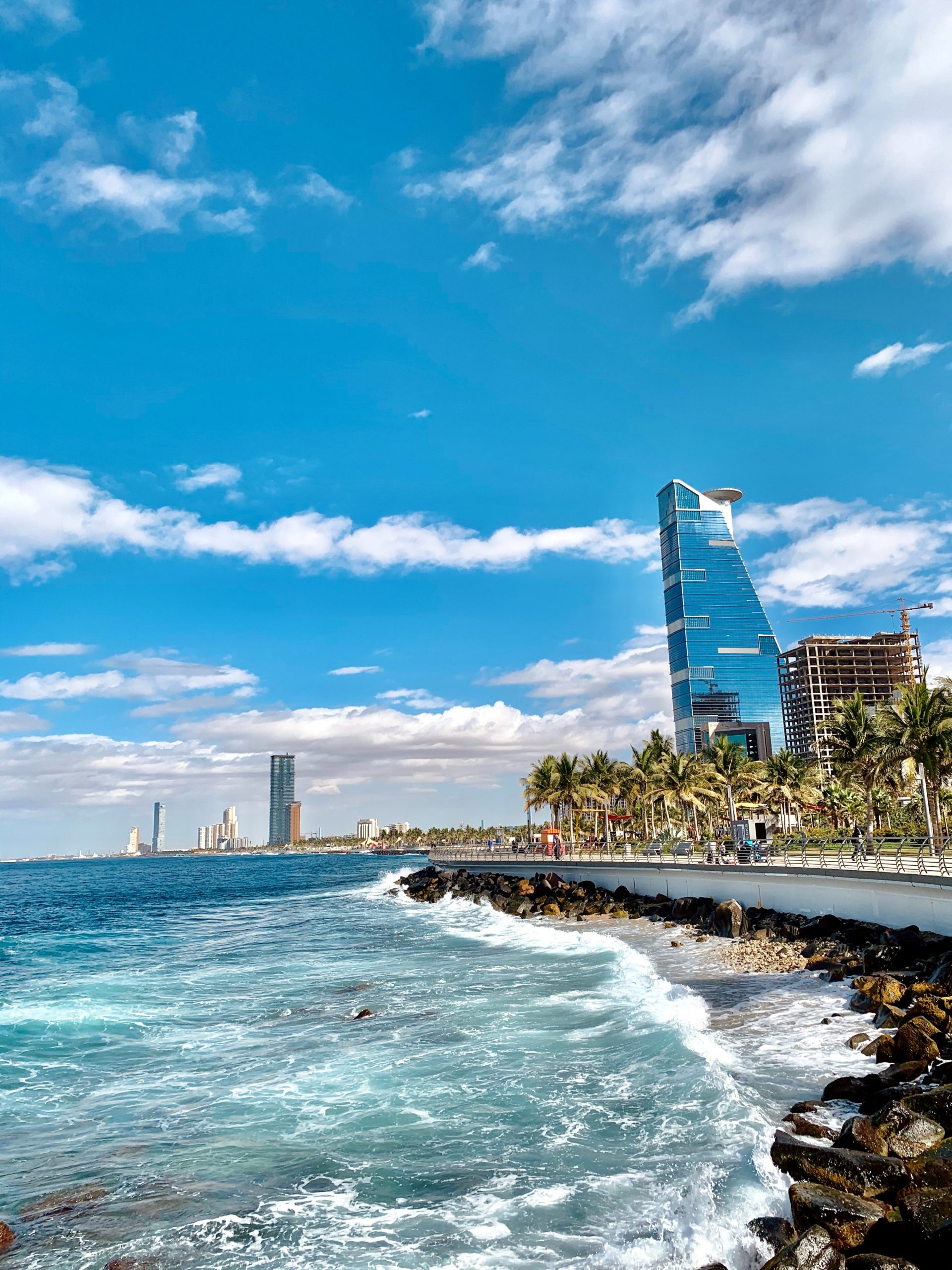Under the direction of His Royal Highness (HRH) Crown Prince Mohammed bin Salman, Saudi Arabia has initiated a range of major development projects in recent years in an attempt to lessen its economic reliance on oil and gas. Beyond attempting to diversify its economy, the Kingdom has focused on projects that emphasize its cultural heritage and hospitality in addition to its environmental conservation aspirations.
Saudi Arabia intends to direct approximately $7 trillion of government and investment spending in major projects by the end of the 2020s. Major projects of note include the $8 billion Qiddiya entertainment capital, $500 billion high-tech city Neom, and the ambitious Red Sea Project, which will see the development of hospitality properties along 20 kilometers of untouched coastline between Al Wajh and Umluj. Nasser Saidi, an economics consultant in Dubai, notes these and other investments comprise efforts to complete a “structural transformation of the Saudi economy.”
Building upon these projects, the Crown Prince officially launched the $20 billion Jeddah Central Project, previously known as New Jeddah Downtown, in December 2021. Below is an early look at the three-phase project.
Landmarks and Amenities
The goal of the Jeddah Central Project is to transform the city center of Saudi Arabia’s second-largest urban area into a world-class destination with a range of amenities and attractions. Development will occur across more than 5.7 million square meters and the region will be anchored by an opera house, oceanarium, museum, and sport stadium. These properties will help boost economic performance in culture and sport, entertainment, and tourism.
Developers will also construct at least 17,000 residential units across various residential areas, as well as hotels with combined capacity exceeding 2,700 rooms. The project will also feature restaurants, cafés, shopping centers, beach resorts along a 9.5-kilometer waterfront, and a marina with a 2.1-kilometer-long beach. Public services and open space will comprise 40 percent of the project area. The first phase of the project is expected to be complete by 2027.
“The project master plan reflects the Hejazi essence of urban fabric and blocks that characterize the historic city of Jeddah in a contemporary interpretation designed to the highest international standards,” read an official statement about the project on December 17. “It also considers the application of the latest technologies to transform Jeddah into a smart destination, creating an effortless experience for residents and visitors.”
Financed by the Public Investment Fund
Saudi Arabia’s Public Investment Fund (PIF) is the specific government vehicle used to finance the project, while the Jeddah Central Development Company, headed by HRH Prince Mohammed, will oversee development.
The PIF is among the largest sovereign wealth funds in the world and has created more than 45 companies in 13 strategic sectors since its inception. Moreover, it has created in excess of 400,000 direct and indirect jobs and has approximately $500 billion in assets under management. It operates four domestic investment portfolios as well as two global portfolios and acquires funding through government capital injections, transfers of government assets, loans and debt instruments, and retained earnings from investments.
Part of Vision 2030
Like many of the aforementioned mega projects, the Jeddah Central Project is a core component of Saudi Arabia Vision 2030. This initiative, developed by HRH Prince Mohammed and announced in 2016, serves as a roadmap to leverage the Kingdom’s investment power, strategic position, and status as the center of the Islamic and Arab worlds to achieve further economic prosperity and increase citizens’ quality of life. Overall, Vision 2030 includes nearly 100 specific objectives under the pillars of “A Vibrant Society,” “A Thriving Economy,” and “An Ambitious Nation.”
The Kingdom has already celebrated several non-development milestones associated with Vision 2030. Within three years of its launch, the percentage of Saudis over the age of 15 who participated regularly in sports increased nearly 10 percent to 22.34 percent. Saudi Arabia also made strides in digital infrastructure for the healthcare sector and opened its first cinema, which was made possible through a partnership between the PIF-owned entertainment company SEVEN and AMC. There were more than 30 cinemas owned by 11 different operators in Saudi Arabia as of September 2021.
Beyond those achievements, Saudi Arabia has steadily risen up the Global Competitive Index since 2017 and is now 36th among all countries. The number of sports federations in the Kingdom has doubled and the number of entertainment venues grew from 154 in 2017 to 277 in 2020.
Sustainability in Line with the Saudi Green Initiative
Over 500 engineers and consultants from five of the world’s premier design houses helped create the master plan for the Jeddah Central Project, and in doing so, ensured all build elements were aligned with the goals of the Saudi Green Initiative. This initiative engages public and private partners to combat climate change and secure a safe and comfortable future for successive generations. Among other targets, the Kingdom intends to plant 10 billion trees and reduce carbon emissions by more than 4 percent of its global contributions.

